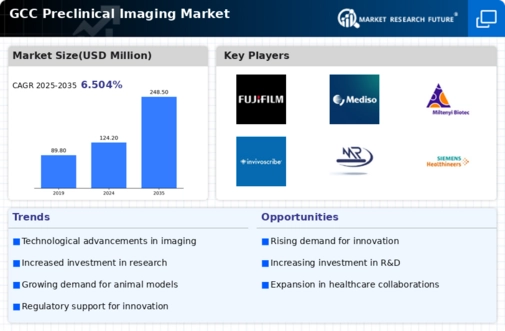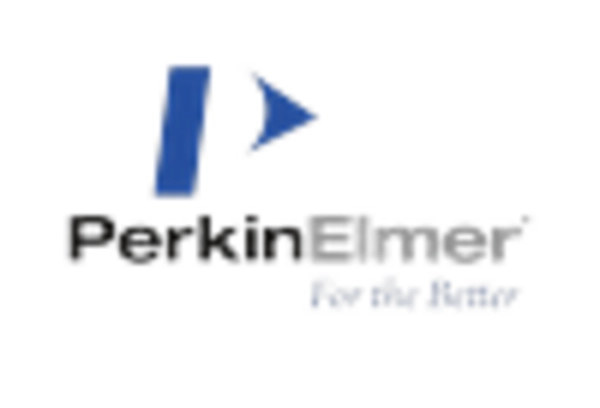Expansion of Biopharmaceutical Sector
The expansion of the biopharmaceutical sector in the GCC region is significantly impacting the preclinical imaging market. As biopharmaceutical companies increasingly invest in research and development, the demand for advanced imaging technologies is expected to rise. The biopharmaceutical market in the GCC is projected to grow at a compound annual growth rate (CAGR) of around 12% over the next five years. This growth is likely to drive the need for sophisticated imaging techniques that can support the development of novel therapeutics. Consequently, the preclinical imaging market is poised to benefit from the increasing collaboration between imaging technology providers and biopharmaceutical firms, leading to enhanced imaging solutions tailored for drug development.
Emergence of Advanced Imaging Modalities
The emergence of advanced imaging modalities is reshaping the landscape of the preclinical imaging market. Innovations such as hybrid imaging techniques, which combine multiple imaging modalities, are gaining traction in the GCC region. These advanced techniques offer enhanced resolution and the ability to visualize complex biological processes in real-time. The integration of technologies like PET/MRI and CT/PET is expected to provide researchers with unprecedented insights into disease mechanisms and treatment responses. As the demand for more sophisticated imaging solutions grows, the preclinical imaging market is likely to witness a surge in the adoption of these advanced modalities, ultimately improving the quality and efficiency of preclinical research.
Rising Demand for Non-Invasive Techniques
The preclinical imaging market is experiencing a notable increase in demand for non-invasive imaging techniques. Researchers and pharmaceutical companies are increasingly recognizing the benefits of non-invasive methods, which allow for real-time monitoring of biological processes without the need for surgical intervention. This trend is particularly relevant in the GCC region, where there is a growing emphasis on ethical research practices. The market for non-invasive imaging modalities, such as MRI and PET, is projected to expand significantly, with estimates suggesting a growth rate of approximately 15% annually. This shift towards non-invasive techniques is likely to enhance the efficiency of drug development processes and improve the overall quality of preclinical studies.
Growing Focus on Animal Welfare Regulations
The preclinical imaging market is influenced by an increasing focus on animal welfare regulations in the GCC region. As ethical considerations gain prominence, researchers are compelled to adopt imaging techniques that minimize animal suffering and enhance the quality of data obtained from preclinical studies. Regulatory bodies are implementing stricter guidelines, which may lead to a shift towards more humane and efficient imaging methods. This trend is likely to drive the adoption of advanced imaging technologies that align with ethical standards, thereby fostering growth in the preclinical imaging market. The emphasis on animal welfare is expected to reshape research practices, encouraging the development of innovative imaging solutions that comply with regulatory requirements.
Increased Investment in Research and Development
Investment in research and development (R&D) within the preclinical imaging market is on the rise, particularly in the GCC region. Governments and private entities are allocating substantial funds to enhance imaging technologies and methodologies. This influx of capital is expected to drive innovation, leading to the development of advanced imaging systems that can provide more accurate and detailed insights into biological processes. Reports indicate that R&D spending in the healthcare sector in the GCC has increased by over 20% in recent years, which is likely to positively impact the preclinical imaging market. Enhanced imaging capabilities will facilitate more effective drug discovery and development, ultimately benefiting the pharmaceutical industry.

















Leave a Comment